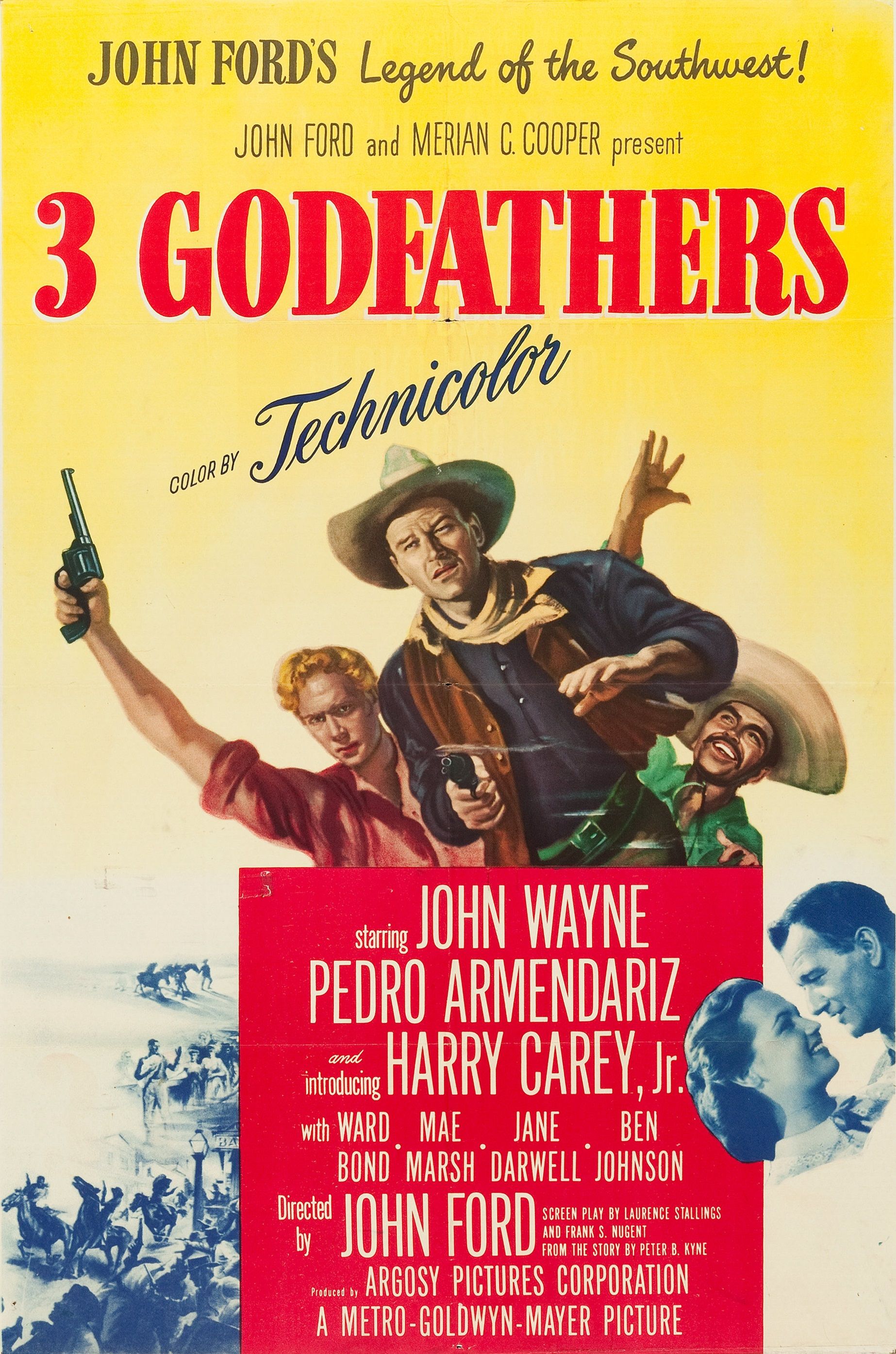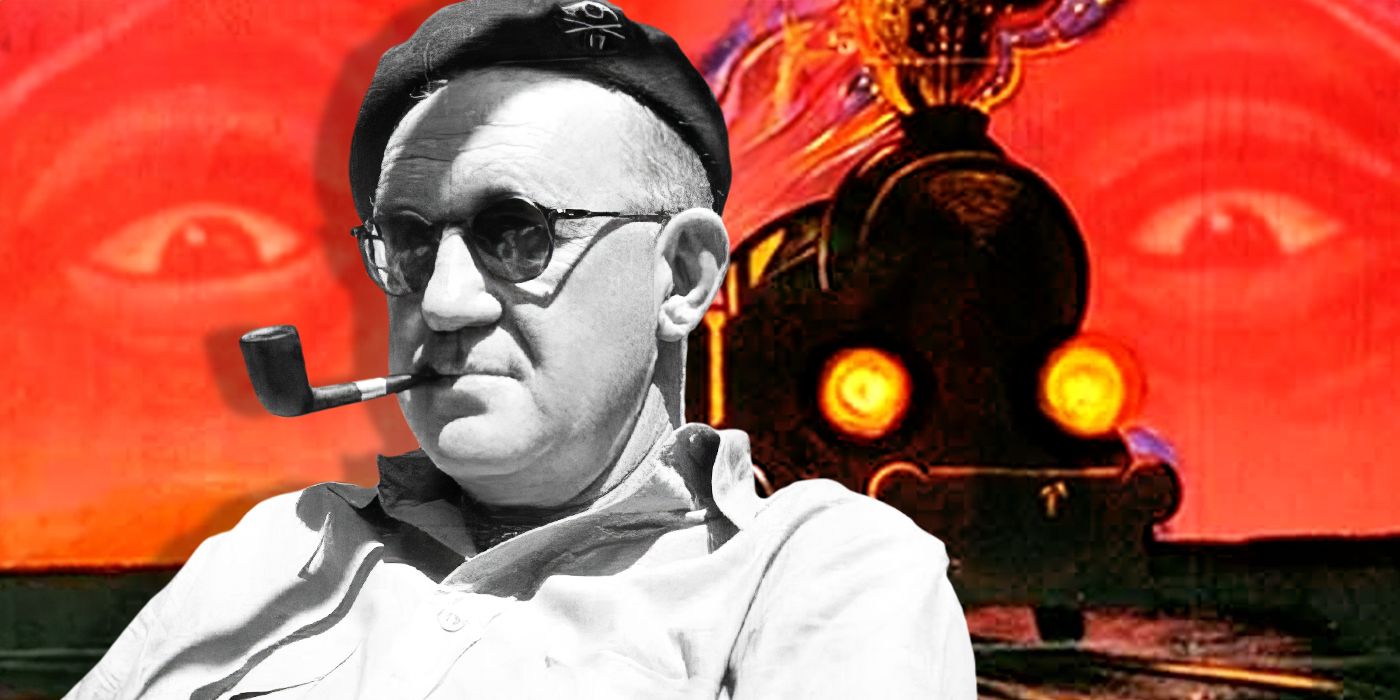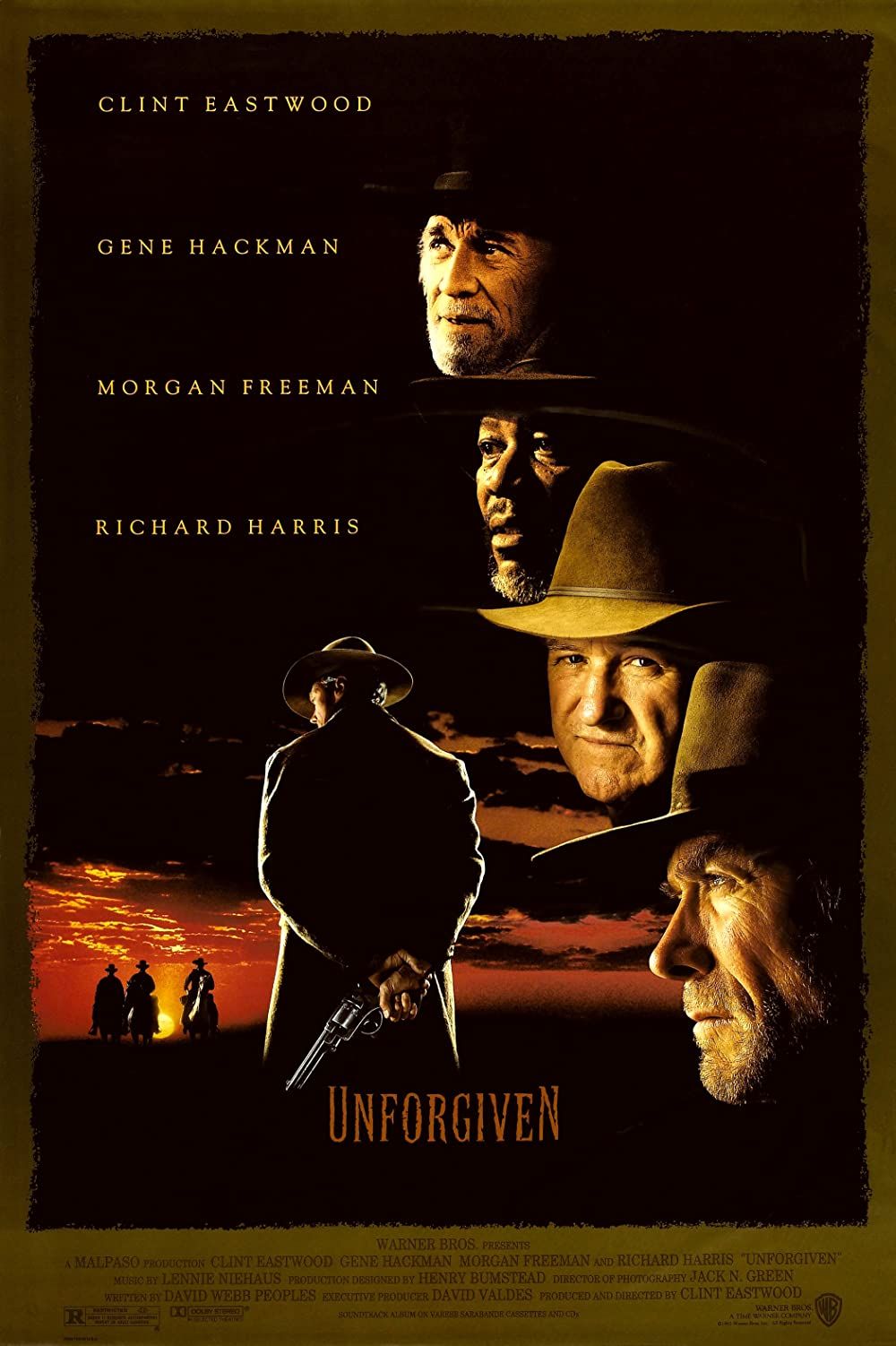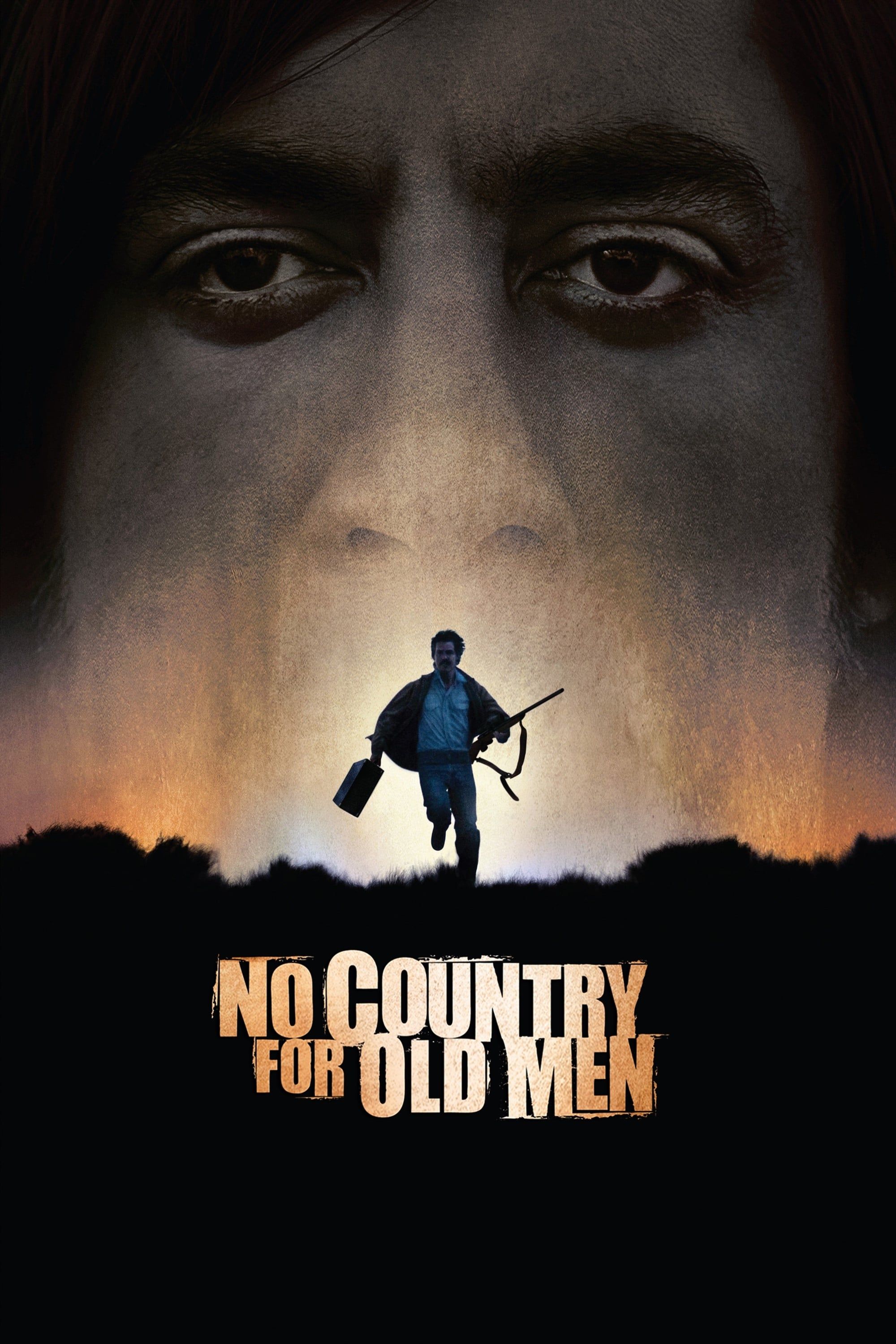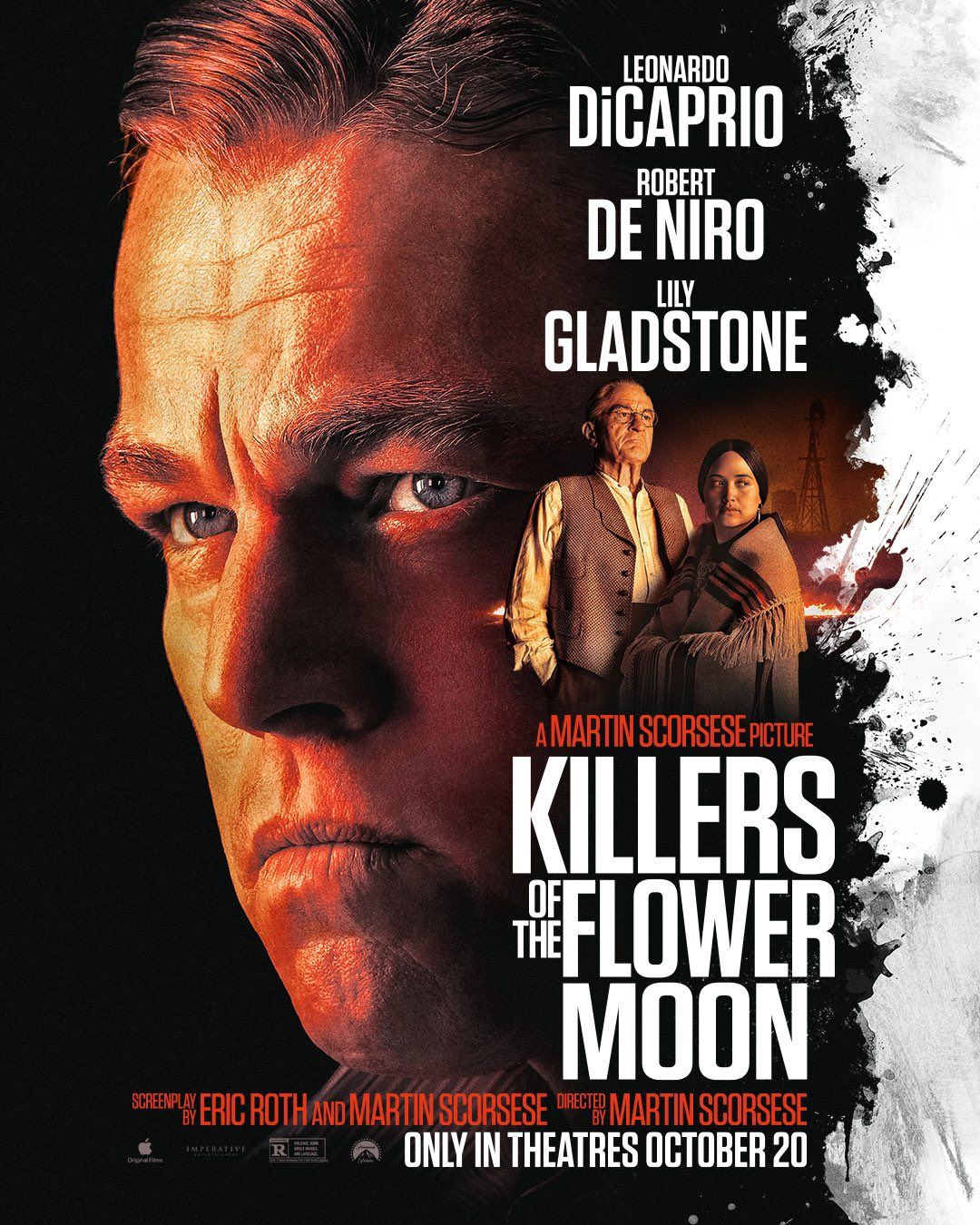Entertainment
The 27 Best John Wayne Films, Ranked – Part 2 – My Blog
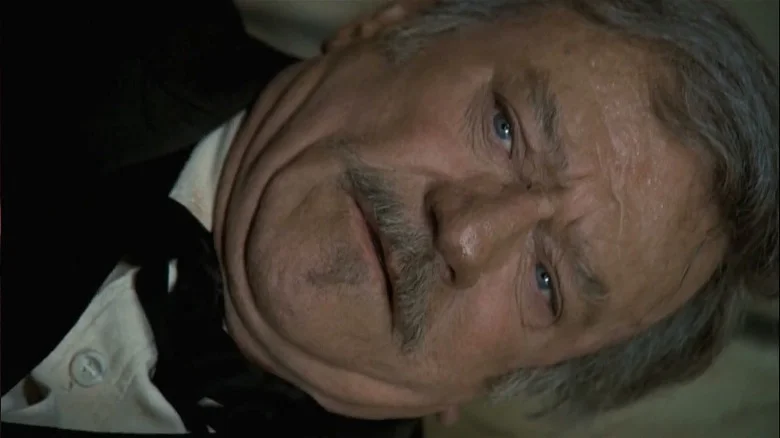
15. The SearchersWarner Bros.I should get the other controversy out of the way. “The Searchers” is to John Ford what “Rio Bravo” is to Howard Hawks. It is a vaunted masterpiece that’s hailed by some as not only the best film of John Wayne’s career, but also the greatest example of the western genre (via AFI). Now, I like to go with the grain. I like to be engrossed by a film and connect with those who feel the same way, but “The Searchers” is another film that, while interesting, is less than the sum of its reputation.Still, whatever you think of it, “The Searchers” is not just another mid-century western. The immediate distinction is Winton C. Hoch’s painterly cinematography; the image of Wayne framed by the cabin doorway is the definitive moment of the actor’s career. But what really elevates the film for many is the moral ambiguity of Ethan Edwards, John Wayne’s darkest character.Prickly, spiteful, and bigoted, Edwards personifies the film’s vision of the frontier, a place where conflict is not a matter of good and evil but a painful cycle of death and enmity. However, the word “idea” is salient, for while “The Searchers” is dark in theme, it’s not dark in execution. It’s dated PG fare that’s toothless by comparison to “The Wild Bunch,” “Soldier Blue,” and numerous other revisionist westerns.14. How the West Was WonWarner Brothers/MGMBy the end of the 1950s, cinema was in trouble. Television had eroded the studios’ monopoly on visual entertainment and executives were scrambling to find an edge. Their solution was to tell big stories on a huge, sweeping scale, resulting in a wave of epics such as “Ben Hur,” “Spartacus,” and “How the West was Won,” the first narrative feature film to be presented on a curved Cinerama screen (via Britannica).“How the West Was Won” followed a similar format to “The Longest Day,” released just under a month prior on October 4, 1962. Both films employed three directors, with “West” boasting the strongest line-up: John Ford, Henry Hathaway, and George Marshall. The national origin story is told in five chapters: “The Rivers,” “The Plains,” “The Civil War,” “The Railroad,” and “The Outlaws.” John Wayne appears as General William Tecumseh Sherman in the Civil War section, delivering another of his gruff military performances.“How the West Was Won” is the proverbial ensemble epic, so Wayne isn’t afforded his usual star vehicle antics. However, the film is still an interesting piece of Hollywood mythmaking with gorgeous Technicolor visuals and a broadside of American A-list talent.13. She Wore a Yellow RibbonRKO Radio Pictures“She Wore a Yellow Ribbon” is a building block in the legacies of John Wayne and John Ford, mostly because of the scenery, which was captured on the Arizona-Utah border. It wasn’t the first time that Ford had shot a film in Monument Valley, but it was the first time that he took cinematographer Winton C. Hoch to the awesome sandstone buttes. Hoch captures the landscape’s sweeping vistas at all times of day, with the most arresting imagery coming at dusk, when the sky turns mauve and is streaked by an awesome yellow haze.Hoch’s camerawork made a big impression on the western genre, but “Yellow Ribbon” was also a personal, important film for John Wayne. Like in “Red River” the year before, Wayne played a character some 20 years his senior, which required him to depict all the complexities and vulnerabilities that come with that. The Duke called his work as Captain Brittles “the best acting job I’ve done … It’s about the only picture I’ve been in where I could play a character that was a little apart from the image that has developed for me over the years on the screen” (via John Wayne: The Life and Legend).12. Red RiverUnited Artists“Red River” is something of a watershed moment in Wayne’s career. The actor had spent the nine years since “Stagecoach,” his star-making film, building the robust but easygoing persona that he’d use for the rest of his career. However, the character of Thomas Dunson introduced viewers to a new, darker John Wayne performance.Dunson isn’t an amiable gunslinger, but rather a rancher who manages his vast livestock with all the merciless ambition of John Dutton, the gruff patriarch of “Yellowstone.” Dunson lives with his herd near the Rio Grande, at the southern end of the Chisholm Trail. He figures that if he is to get the best price for his herd, he must lead a huge cattle drive along the trail to Missouri, no matter how arduous.Numerous people suffer Dunson’s wrath on this journey, especially his adopted son, Matt (Montgomery Clift). It was the first time that Clift took his method acting from Broadway to the big screen, where it proved a sensitive counterweight to Wayne’s bullying antagonist (via TCM).11. The Quiet ManRepublic PicturesIn “The Quiet Man,” John Wayne plays neither a cowboy nor a soldier. He instead appears as a retired boxer named Sean Thornton, who’s returning home from Pittsburgh to Inisfree on the rugged west coast of Ireland.Set in the 1920s, the film depicts Ireland as a lush land of rolling hills, stone bridges, and cheerful locals — cheerful apart from Will Danaher (Victor McLaglen), that is. Danaher resents Sean’s intention to buy old Thornton land, but the real trouble arises when Sean falls for Danaher’s sister, Mary Kate (Maureen O’Hara).“The Quiet Man” was the second of John Wayne’s films with Maureen O’Hara, a lifelong friend. Their chemistry is what makes “The Quiet Man” such an enduring classic, placing a weepy heart at the center of all the verdant beauty.“Enduring” is not just an empty word; “The Quiet Man” made a lasting impact on the Irish village of Cong, where the film was shot. A lovely stone bridge that appears in the film is known today as “The Quiet Man Bridge,” and the village center has a statue and a museum dedicated to preserving the film’s memory (via Irish Post).10. The CowboysUnited Archives/Getty ImagesA highlight of Wayne’s later years, “The Cowboys” features the Duke at his most softly patriarchal. That’s because he’s responsible for leading a group of teenage boys along a 400 mile cattle drive. No sane man would choose such an endeavor, but it’s the only option available to Wil Andersen (Wayne), whose ranch hands have abandoned him for a gold rush.The notion of “softly patriarchal” is subjective, of course. As viewers of “Hondo” will know, a John Wayne figure will gladly teach a boy to swim by throwing him into a pond. A similar moment occurs in “The Cowboys,” in which Andersen confronts a stuttering boy whose condition endangered a friend stranded in a river. Instead of consoling the child, Andersen accuses him of not trying hard enough to save his friend, which riles the boy to the point of repeatedly insulting Anderson, at which point the stutter stops. It’s an old school moment that a certain kind of father would nod at approvingly.The nodding won’t last for long, though, because after much toil on the long and arduous cattle drive, “The Cowboys” ends in a divisively fatal fashion.9. StagecoachUnited Artists“Stagecoach” is usually cited as the beginning of John Wayne’s canon, but his first leading role was actually in “The Big Trail,” a pre-Code western from 1930. An ambitious and expensive production, “The Big Trail” bombed on release and put its 23-year-old star out to B-movie pasture for much of the decade (via TCM). Director John Ford helped cast Wayne in that doomed picture, and when the script for “Stagecoach” came together, he was adamant that John Wayne be given another chance. “He’ll be the biggest star ever,” Ford observed, “because he is the perfect everyman.”Ford’s instincts were canny. “Stagecoach” brought Wayne to his biggest audience yet, showcasing the easy machismo he’d developed in the cinematic wilderness. The director also proved his own talents, capturing big characters and even bigger scenery in what became one of the most influential films of all time. Orson Welles said he watched the film 40 times in preparation for “Citizen Kane” (via Irish Film Institute).8. Fort ApacheUnited Archives/Getty ImagesJohn Wayne is usually the master of his domain; he calls the shots and controls the environment. However, that is not true of “Fort Apache,” the first film in John Ford’s “cavalry trilogy.” Here, Wayne plays Captain Kirby York, a civil war veteran who is strong, flexible, and yet subordinate to Lieutenant Colonel Owen Thursday (Henry Fonda), a patrician West Point graduate.Thursday is chosen to lead the western outpost of Fort Apache, which is a job that requires tactful diplomacy with local Native Americans. However, the lieutenant colonel is ignorant of their customs and rejects any notion of co-operation. Instead, he rules the fort with dogmatic arrogance, leading the regiment into violent conflict with the Apache tribe. York butts heads with Thursday at every turn, but there is no overruling him. Thursday’s Custer syndrome can end only one way, and it isn’t pretty.“Fort Apache” was novel for its time because it depicted Native Americans with nuance and empathy. We see the Apache not as villains but a community capable of reason and compromise, unlike Lieutenant Colonel Thursday.7. The Longest Day20th Century FoxJohn Wayne is the first big actor to appear in “The Longest Day,” a sweeping account of the D-Day invasion. The film may have a bleak docudrama style with an ostensible focus on historical accuracy, but it doesn’t skimp on star power. The ensemble cast of “42 international stars” includes everyone from Richard Burton and Sean Connery to Robert Mitchum, Robert Ryan, and Henry Fonda.Wayne drops his breezy charm to play Lieutenant Colonel Benjamin Vandervoort, delivering one of his more hard-edged performances. It’s an appropriate choice, given the subject matter, but Wayne was perhaps overly serious when it came to the Second World War. For instance, when Steven Spielberg sent Wayne the script for his war comedy “1941,” the aging star described it as “un-American” and telephoned the director to say, “Don’t joke about World War II” (via Contact Music).There are few laughs in “The Longest Day.” The battle sequences may lack the bloody mayhem of “Saving Private Ryan,” but the film still captures the terrible waste of war. There’s no doubting the epic’s sheer scale, either. Hordes of actors and extras storm the screen, captured overhead by some of the finest aerial photography of the period.6. El DoradoUnited Archives/Getty Images“El Dorado” is so similar to “Rio Bravo” that it’s effectively a remake. However, it is an exception to the rule that all remakes are inadequate by being superior in casting, combat, and story detail.First, there’s the intriguing pairing of John Wayne and Robert Mitchum. They had both appeared in “The Longest Day,” but “El Dorado” was the only time the two Golden Era men shared the screen. Mitchum opens the film as Sheriff J.P. Harrah, who paces across the screen with a badge and broad shoulders. This doesn’t last, though. Harrah is the Dude character from “Rio Bravo,” so the demon liquor is waiting for him. Compared to Dean Martin, Mitchum is more anguished, although there is no rendition of “My Rifle, My Pony, and Me” here.Washed up though he may be, Harrah has a job to do when gunslinger Cole Thornton (Wayne) returns to El Dorado. Together, they must protect an upstanding family against a greedy landowner with designs on their ranch and their water supply. Assisting them is Mississippi (James Caan), an incendiary young man who’s good with a knife but can’t shoot a bullet into the proverbial broad side of a barn.I’m not sure why Howard Hawks made “El Dorado.” It is a rehash of a film that wasn’t even 10 years old. But I’m glad he did, because it makes up for a celebrated classic that left me cold.5. Baby FaceWarner Brothers/YouTube“Baby Face” is a timeless commentary on sexuality, ambition, and greed. It also features a terrific performance from Barbara Stanwyck, who avoids the stagey manner that dates even the best films of classic Hollywood.Lily Powers is the titular “baby face,” which is a pet name given to her by Jimmy McCoy, played by a 25-year-old John Wayne. McCoy is Lily’s latest conquest and one of the more disposable ones, as he doesn’t have the means to support her grandiose ambitions in reaching all the avarice New York City has to offer.Her quest begins in a ramshackle speakeasy in Erie, Pennsylvania. She sits idly in this industrial milieu, barked at by her abusive father, who “offers” her to a local politician to avoid getting busted by prohibition agents. Lily knows how to stand up for herself, but the young woman remains adrift until Adolf, an eccentric cobbler, introduces her to Nietzsche’s “will to power” philosophy. This awakens Lily’s sexuality, which becomes a tool of manipulation and then outright Machiavellianism, leaving a trail of wrecked marriages and broken hearts in its wake.4. Hatari!United Archives/Getty Images“Rio Bravo” is the celebrated hang out film of John Wayne’s career, but who would want to hang out in the Old West? Me, actually. But first I’d visit the characters of “Hatari!” for drinks, dinner, and fun in 1960s Tanganyika (present day Tanzania).Wayne stars as Sean Mercer, a tough but amiable outdoorsman who must lead a crew of big game catchers. His team includes Kurt (Hardy Krüger), a German race car driver; Pockets (Red Buttons), a sprightly New York cabbie; and Dallas (Elsa Martinelli), an Italian photographer. The characters share a whimsical chemistry as they joke, flirt, eat, and care for the compound’s exotic animals. You may not have seen “Hatari!,” but you’ll recognize Henry Mancini’s score during the cheeky elephant sequence, which typifies the film’s balmy escapism.It’s not all R&R, though. The film is punctuated by a series of hunt scenes in which the actors use trucks, lassos, and cages to capture a range of wild animals including zebras, giraffes, leopards, buffalo, and even a rhinoceros. The methods seem antiquated by contemporary standards, but “Hatari!” is less questionable than other films from the period, like Jacques Cousteau’s documentary “The Silent World,” in which the famed oceanographer detonates reefs, slaughters sharks, and attacks sperm whales with the bow of his ship.3. True GritParamount PicturesThe film that won John Wayne the Oscar, “True Grit” is effectively a buddy film that pairs Rooster Cogburn (Wayne), a lumbering 6′ 4″ drunkard, with Mattie Ross (Kim Darby), a crusading teenager full of earnest resolve.Their paths cross following the death of Mattie’s father, Frank (John Pickard), who’s shot dead by family acquaintance Tom Chaney (Jeff Corey). Dissatisfied by the sheriff’s inaction, Mattie meets with Cogburn because he is said to have “true grit,” which she believes to be a necessity for catching a villain like Chaney.What follows is a power struggle between Mattie, Cogburn, and a Texas ranger named La Boeuf (Glen Campbell). This isn’t all conflict and survivalism, though. Mattie may be half an orphan, but “True Grit” is fairly light in tone. Its 128 minutes breeze by thanks to the leads’ charisma, the cat-and-mouse plotting, and the awesome Rocky Mountain adventurism. Glen Campbell’s single is a delight, too.2. The ShootistParamount PicturesThe Duke’s last film is also one of his best. In “The Shootist,” Wayne plays J.B. Books, a gunfighter who, upon his arrival in Carson City, Nevada, is diagnosed with terminal cancer. The diagnosis is given by Dr. Hostetler (James Stewart), an old friend of Books who speaks frankly about the pain of Book’s condition and concludes one of their meetings with a bleak suggestion: “I would not die a death like I just described … not if I had your courage.”J.B. Books breaks no new ground for Wayne, but he brings the best of his grit and chivalry to the role, and it works well against Bond Rogers (Lauren Bacall), a matronly boarding house owner who hosts Books with icy reluctance. However, it is real world circumstances that really gives “The Shootist” its poignant, funeral pathos.In 1964, John Wayne was diagnosed with lung cancer. He would be given the all clear, but only after losing much of his left lung (via New York Times). Wayne kept busy through the 1960s and into the new decade, but ill health loomed over the actor’s psyche. “I have cancer,” Wayne told his son Patrick during a bout of stomach pain. “I’ve had cancer before and I know how it feels and I have it now.” In January 1979, the Duke was diagnosed with stomach cancer during gallbladder surgery. He died six months later.1. The Man Who Shot Liberty ValanceParamount/YouTubeMany point to “The Searchers” as the greatest collaboration between John Ford and John Wayne, but for me it’s “The Man Who Shot Liberty Valance,” a story of violence and justice on the American frontier.All developed governments have a monopoly on violence. Citizens grant this monopoly in return for safety and security. But how often does this arrangement fail us? How often does it enable those who may do us harm? The residents of Shinbone ask these questions as the harbingers of progress reach their town in the early 20th century, the most notable of which is Ransom Stoddard (James Stewart), a high-minded senator who speaks stridently about the rule of law. His earnest rhetoric may work on Capitol Hill, but it doesn’t impress the people of Shinbone too much, especially Liberty Valance (Lee Marvin), the town’s worst outlaw.Marvin is brilliant in the role. Far from being a cackling stock character, Liberty Valance is a thoroughly hateful man. If he’s not committing outright violence, he behaves like a playground bully. But Valance doesn’t have free rein in Shinbone; he’s stopped short by Tom Doniphon, performed by a career-best John Wayne.Swaggering and violent but not unfair, Doniphon is precisely the figure you want in the absence of government authority. But is his violence preferable to Stoddard’s careerism and bureaucracy? At what point does the law stop and murky pragmatism begin? These are the compelling themes of this premier American western.Read More: https://www.slashfilm.com/1184671/the-best-john-wayne-films-ranked/
You may like
Entertainment
The Christmas Western That’s Also One of John Wayne’s Best – My Blog
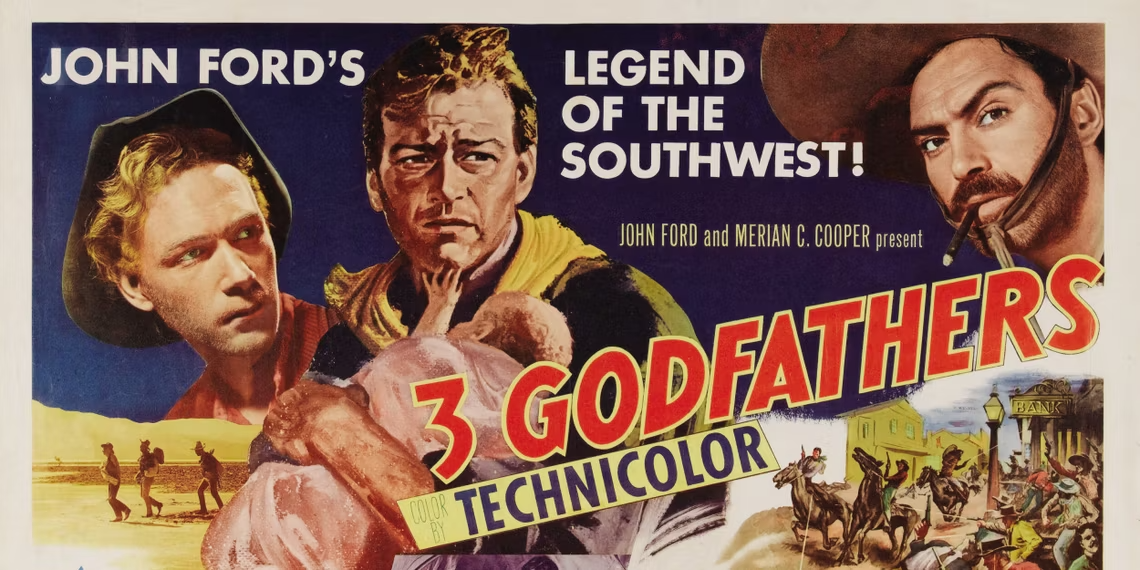
THE BIG PICTURE
3 Godfathers is a touching story of redemption, highlighting the capacity for even troubled characters to change. The film uses deliberately slow pacing to emphasize character development and showcase stunning natural environments. Christmas is an important part of 3 Godfathers, but the film’s positive message about humanity and forgiveness resonates beyond religious beliefs.

Few partnerships in cinematic history are quite as successful as John Wayne and writer/director John Ford. Ever since their first collaboration on the breakthrough 1939 adventure film Stagecoach, Wayne and Ford have told innovative stories about the American experience that revolutionized the Western genre. While Wayne starred in many Western classics, his work with Ford often embraced the darker side of the genre; 1956’s The Searchers featured one of cinema’s definitive anti-heroes, and 1962’s The Man Who Shot Liberty Valance examined the rise of political tension at the tail end of the Western era. Despite the gravity of many of their best collaborations, Wayne and Ford were also able to take a lighter approach to the genre. This is best evidenced by their delightful 1948 western 3 Godfathers, a Christmas-themed adventure movie that drew from Biblical passages. While on the surface it looked like a typical crowd pleaser, 3 Godfathers used its Christmas themes to tell a positive story of redemption.
3 GodfathersThree outlaws on the run risk their freedom and their lives to return a newborn to civilization.
Release DateJanuary 13, 1949DirectorJohn FordCastJohn Wayne , Pedro Armendáriz , Ward Bond , Mae MarshRuntime106 minutesGenresDrama , Western
‘3 Godfathers’ Is a Touching Story of Redemption3 Godfathers follows the cattle raiders Bob Hightower (Wayne), Pete (Pedro Armendáriz), and William “The Abilene Kid” Kearney (Harry Carrey Jr.), who rob a bank in the wholesome town of Welcome, Arizona. Ford intentionally starts the film like a typical Western and uses the opening sequence to examine the characters’ morality. Welcome is virtually undisturbed by violence, and is decorated with eloquent festive decorations. While the heist sequence itself doesn’t cause any significant damage and leaves no casualties, it’s enough to disrupt the fragile peace. Depicting Bob, Pete, and William as troublemakers that damaged a community gives them the capacity for redemption. Although many of Wayne’s leading roles were as nearly flawless heroes, 3 Godfathers forced him to play a character of a more checkered morality.
While the heist sequence is an exciting way to start the film, the inciting incident comes shortly thereafter when the three bandits become trapped in a brutal sandstorm and discover a covered wagon that has been damaged by the weather. Within the wagon is a pregnant woman (Mildred Natwick) who is dying; despite their best efforts, Bob, Pete, and the Kid are only able to save the child. Her dying wish is for the three men to protect the boy and bring him to safety. While the prospect of three quirky outlaws trying to bring an infant to safety seems rather silly compared to Wayne and Fords’ other collaborations, the film shows that the child’s innocence is at stake. Collateral damage has never been a concern for Bob before, but seeing an innocent infant in danger forces him to reconsider his life’s work.While the woman’s death and childbirth are treated with gravity, 3 Godfather is a more humorous film compared to Ford’s other westerns. Wayne is often not given credit for his talents as a comedic actor, as he wouldn’t star in the western comedy McLintock! for another decade. Watching Bob, Pete, and William attempt to bathe, feed, and entertain the baby is immensely entertaining, as it’s clear that none of them have ever seriously considered fatherhood. Their lives as bandits are so exciting that the prospect of “settling down” never felt like a possibility. Although watching over the child initially seems like a burden, all three men discover that empathy has its own rewards.
‘3 Godfathers’ Uses Deliberately Slow Pacing
Ford is a favorite filmmaker of directors like Steven Spielberg because of the deceptive simplicity of his stories. 3 Godfathers is relatively light on action, saving the majority of its set pieces for the opening and closing moments. While the lack of forward momentum could have been a determinant of the film’s pacing, the straightforward story allows 3 Godfathers to put a greater focus on its characters. It’s entertaining to see how Bob, Pete, and William each draw from their own experiences as they figure out what they must do to ensure the infant’s help. While their disagreements over the best parenting practices (including one particularly amusing argument over when to bathe the child) occasionally spark arguments, the characters are never aggressive and cruel to each other. The positive depiction of masculinity has made 3 Godfathers age very well in comparison to other Westerns from the classic era.
The gradual pacing also allows Ford to focus on the gorgeous natural environments. A recurring hallmark within Wayne and Fords’ collaborations is their grand scope, and 3 Godfathers uses its vivid cinematography to show the characters’ changing perspective. Bob, Pete, and William are only able to take note of the landscape’s natural beauty after they are forced to slow their pace to keep the infant safe; by moving at a slower rate, they finally recognize the natural beauty that has been in front of them the whole time. However, the gradual nature of their quest also exposes the characters to greater danger. While initially, the open Arizona desert feels exciting, the brutal weather constraints ultimately make their mission more strenuous. This is a piece of clever thematic storytelling on Ford’s part; he can suggest that the hectic lives that these men had been leading were unsustainable.Christmas Is an Important Part of ‘3 Godfathers’
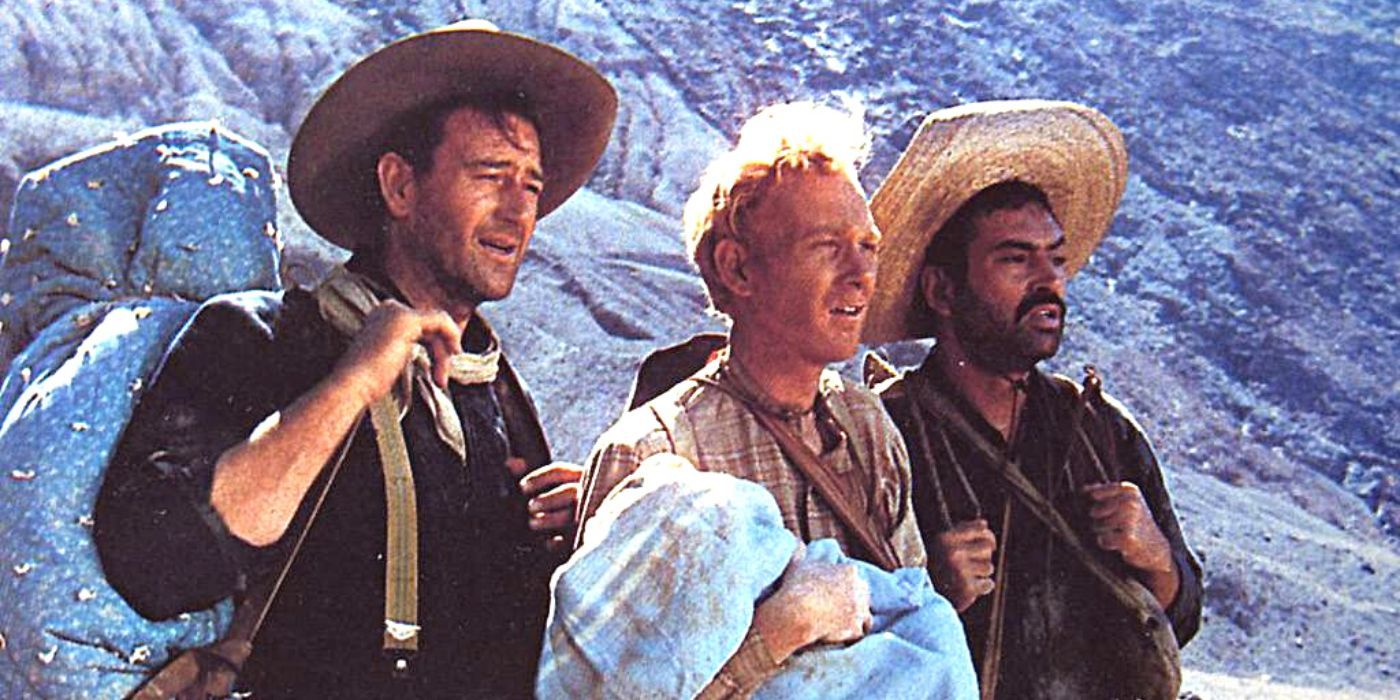
3 Godfathers serves as a loose retelling of the Biblical story of the Three Wise Men and Jesus of Nazareth; Bob even quotes specific lines from scripture during the bandits’ first encounter with the dying mother, and the characters head for a town literally named “New Jerusalem.” While some faith-based movies risk being impenetrable to a non-Christian audience, the film doesn’t require knowledge of its religious allusions to be entertaining. If the references to Biblical verse are ignored, 3 Godfathers still works as an entertaining adventure story. The themes of kinship, humanity, and forgiveness are universal, and not exclusively bound to Christian beliefs.With its open-hearted characters and tactful humor, 3 Godfather proves that sentimentality isn’t a bad thing. The film has a positive message about the inner goodness within everyone, and how even the most unlikely of characters can become heroes. While the Western themes make 3 Godfather perfectly suited for fans of Wayne’s filmography, it’s the film’s faith in humanity that makes it a Christmas classic.
3 Godfathers is available to rent or purchase on Apple TV.
Entertainment
Best Western Movie of Each Decade – My Blog

The Western genre has evolved greatly through its more than a hundred years of existence. From silent tales of honor and dignity, through the iconic look of John Ford and the coolness of Clint Eastwood, all the way to the deconstruction of the genre, each decade has had its share of the genre. The first years of the 20th century saw the Western become part of Hollywood’s agenda, and from the ’40s to the early ’60s, the genre reached its “golden age.”

From the ’60s onward, a much-needed reinvention of ideas and conventions found the genre-shifting toward the present. A new generation of filmmakers gave Westerns their own twist, eventually spawning a variety of subgenres that have been explored all the way into the present. Contemporary works like The Keeping Room, Power of the Dog, or The Rider, where a female-led cast or non-traditional masculinity is at the forefront of the movie, respectively, show just how exciting and diverse the genre has become.
With a rich past, an exciting present, and a bright future, Westerns are more alive than ever. These are the best of each decade, ever since the dawn of the twentieth century.Updated January 14, 2024: This article has been updated with additional Westerns from the current decade, along with where to stream them.The Great Train Robbery (1903)

One of the first-ever Westerns was made when the myth of the Old West wasn’t even that ingrained into society. The stories and legends of the American Frontier still managed to find their way into the American public through word of mouth and pocket novels, and so it arrived all the way to the East Coast in the mind of film pioneer Edwin S. Porter. The 12-minute silent film conveyed the story of a group of outlaws who plan to rob a train in the southwest. The gang not only succeeds in taking off with the look but also terrorize the passengers on board.
The Great Train Robbery Is The True Pioneering WesternThe creator of over 250 films between 1901 and 1908, Edwin S. Porter, made this crisp short film a thrilling ride for its time. With breakneck pacing, innovative cinematography techniques, and enormous potential, The Great Train Robbery became even more iconic because of its final shot consisting of the lead bandit taking aim at the audience, bringing viewers into his world of thrill and danger. In a way, Porter’s creative storytelling laid the framework for structuring the narrative for a Western. Martin Scorsese paid homage nearly 90 years later, ending Goodfellas similarly. Stream on KanopyHell’s Hinges (1916)

Before Clint Eastwood, even before John Wayne, there was William S. Hart. This legend from cinema’s silent age was the first superstar of Westerns, who typically embodied characters who were honorable and morally incorruptible. In the one-hour film Hell’s Hinges, he plays a dangerous gunman named Blaze Tracy, who is commissioned by the local bartender and his accomplices to run out of town a recently-arrived priest and his sister. In turn, he is won by their sincerity and stands in their defense.
Tortured Gunslinger And His Silent RedemptionDirected by Charles Swickard, Hell’s Hinges came into movies just when the Western genre had begun to bloom. With Hart playing the intense anti-hero and bringing his Shakespearean to every scene, it was impossible for the film not to stand out. His conflicted knack for justice fuels every pulse-pounding cinematic shootout. While the drama and suspense were heavy and artistic enough, the complex character study hooked audiences. Hell’s Hinges proved that Westerns could also be a sophisticated form of entertainment. Stream on The Roku ChannelTumbleweeds (1925)

Speaking of William S. Hart, the old master continued with this underrated 1925 film, which was also his last. Self-financed, produced by and starring him, Tumbleweeds depicts the Cherokee Strip land rush of 1893. The movie sees his character, Don Carver, lighting up for one last adventure. This time however, he simply wanted to buy some land and settle down with Molly Lassiter, whom he fell in love with at first sight. Marked by warmth and wisdom, the movie celebrated Hart’s indelible impact on turning westerns into vehicles for storytelling.
Tumbleweeds Is An Iconic Cowboy’s Final RideIn 1939, Tumbleweeds was revived by Astor Pictures and enjoyed another theatrical run. The film now began with an eight-minute monologue by William S. Hart in which he reflected on the Old West and his heyday. This was the only time audiences ever heard his voice, which is much more moving when put in the context that Tumbleweeds was his last ever film. By the mid-’20s, however, audiences were no longer interested in Hart’s brand of westerns, for which he was subsequently dropped by Paramount. Despite its critical praise, the film performed mildly at the box office and has been largely forgotten, which is a huge shame. Stream on Fubo TVStagecoach (1939)Despite being director John Ford’s first Western in over a decade, Stagecoach is to this day one of the most important Westerns ever made. It redefined the genre by being more than what it promises. Its profound narrative is really an allegory for the formation of The United States. The plot follows a group of people traveling on a stagecoach as they learn from one another through the journey and its perils. Being locked in a tense and claustrophobic environment really sets the stage for massive character studies. One of John Ford and John Wayne’s most enduring classics provides fantastic insight into social classes, prejudice, and change.
The Timeless Appeal of Ford-Wayne CollaborationStagecoach is a must-watch for any enthusiast of the Western genre because of its ability to keep creeping forward toward a greater sense of understanding. Ford sharpens his genius for layered narratives and riveting action set pieces to comment on a society that is ever-evolving. As for John Wayne, the actor comes into his own alongside veterans like Thomas Mitchell, Claire Trevor, John Carradine, and more. From the landscape to the sparse dialogue, the film is simply an hour-and-a-half-long masterpiece of the genre. Stream on Prime VideoMy Darling Clementine (1946)My Darling Clementine is one of the few times when John Ford and Henry Fonda came together to create an enduring classic. The film, which follows the legendary Western character Wyatt Earp and his brothers, is a beautifully romantic revenge story. Arriving at the town of Tombstone for a night of rest, Earp wakes up and discovers that one of his brothers has died and their cattle are stolen. Despite the urgency of the plot, the Western remains unique in the legendary director’s filmography for its patient pacing and tone. It’s a quiet masterpiece that often gets overlooked compared to the many that Ford has made.Why My Darling Clementine Is A Cultural TouchstoneFew director-actor combos were as successful as John Ford and John Wayne. However, people often forget they had other classics aside from their Westerns, and people often forget, as well, that Ford was just as brilliant in his works as Henry Fonda. In the 1946 film, the director found boundary-pushing heights by unlocking a softer side to the genre. Its subtle and soulful amalgamation of romance, violence, and justice in the untamed West reminds you of the tenderness that lies beneath the rough. Fonda, as usual, imbues his character with both immense grit and vulnerability. Rent on Apple TVThe Searchers (1956)The Searchers find Ford and Wayne at the top of their capacities, creating a morally ambiguous Western whose influence is felt up to this very day. It concerns a Civil War veteran who, for years, searches for his abducted niece while being accompanied by his adopted nephew. For its underlying narratives tackling race relations, prejudice, and moral dilemmas, and its iconic use of the audiovisual language specific to the medium of film marked a before and after in not only Westerns but in cinema itself.
The Frontier’s Edge Has Never Been More GloriousAs long as there have been Academy Awards, there have been major snubs. The 29th edition of the Oscars left out, without a single nomination, one of the most lauded and influential motion pictures in film history. Only later has its impact been recognized, with the American Film Institute naming the film as “greatest American Western.” Like few other films before or since The Searchers radically changed the game by showcasing America’s darkest aspects. From the identity crises to shifting social sands, its bleak interpretation of what’s to come in the future poses more questions and concerns than answers and comfort. Rent on Apple TVOnce Upon a Time in the West (1968)As times and film changed, the 1960s saw an exhaustion of the traditional formula of Westerns. A new way of using the genre came to be through the brilliant mind of Sergio Leone. His reinvention of the genre came to be known as “spaghetti westerns” and was very different from your traditional tales of the Old West. Once Upon a Time in the West follows the story of a mysterious harmonica-playing gunslinger who becomes the only person to protect Jill McBain’s life and newly inherited land from bandits scheming to seize it from her.
Leone’s Slow-Paced Western Is A Blessing To CinemaLeone’s ‘Dollars Trilogy’ with Clint Eastwood began to cement his legacy, and by 1968, he created the definite western of the ’60s. Framed against the epic scope of America’s Western expansion, its surprising plot twists and intricate details make the film high art. Once Upon a Time in the West is an all-star affair featuring Henry Fonda unusually cast as a villain and a magnificent story made with the help of, surprisingly, Dario Argento and Bernardo Bertolucci. With Ennio Morricone’s humble score pulsing through like a heartbeat, the film is an homage to the genre as well as a step forward in it and has some of the best performances in any Western film. Rent on Apple TV
McCabe & Mrs. Miller (1971)
Described by director Robert Altman himself as an “anti-western,” McCabe and Mrs. Miller is a profoundly original and modern take on the genre. Witty, funny, romantic, and heartbreaking, the film is part of Altman’s great run in the early ’70s and uses the West as an excuse to talk about America itself. Set in the 19th-century Pacific Northwest, the plot follows a gambler and a prostitute who fall in love and do business together. Their initial success, though, is fatally doomed.How McCabe & Mrs. Miller Subverts Clichés Within The GenreAltman strips all conventions bare here. He recasts the West as an anti-romantic fairy tale and gives us a moldy and muddy picture of the frontier village. The period setting and the epic production value make even its bleakest aspects seem realistic and accurate. Warren Beatty and Julie Christie’s soulful leads are so fascinating that you cannot help but root for them to end up together. That said, the film’s iconic approach, landmark setting of snowy Vancouver, and a deeply depressing score by Leonard Cohen set it apart from any other Western ever made. Rent on Apple TVHeaven’s Gate (1980)Directed by Michael Cimino, Heaven’s Gate tells the story of County Sheriff James Averill, who is tasked with protecting immigrants in 19th-century Wyoming. But as change progresses and political tensions between the two parties rise, he finds himself embroiled in a game of betrayal and violence. Nate Champion, the man appointed by Averill to keep the stockmen in check, commits a crime and ends up in a feud with the Marshalls. The film follows a dispute between poor immigrants, wealthy cattle farmers, and the woman they love.Heaven’s Gate Was Too Ahead Of Its TimeAt its time, Heaven’s Gate was a commercial and critical flop, which is what happens when an epic film soars too close to the sun. Today, it’s seen as one of the most misunderstood films ever, and a masterpiece in its own right. The infamous production, which had numerous setbacks, influenced critics way before the film was in theaters and is said to have helped destroy the auteur approach of New Hollywood that had developed in the ’60s and ’70s. The new director’s cut of the film gave Heaven’s Gate a new place in history, and rightfully so; it proves to be arguably the most imaginative and accomplished western of its decade. Stream on Prime VideoUnforgiven (1992)
Unforgiven (1992)
Release Date August 7, 1992Director Clint EastwoodCast Clint Eastwood , Gene Hackman , Morgan Freeman , Richard Harris , Jaimz WoolvettRating RMain Genre Western
Charting off into the ‘90s, we have Unforgiven. The film is directed by Clint Eastwood, who also stars in it. Fun fact: Eastwood had been offered the Unforgiven script since the early ’80s but held onto it for a decade until he felt he was old enough to play the lead. He plays William Munny, a former gunslinger and aging outlaw who gave up on his life of violence and remorseless killing after marriage and turned to fighting instead. He takes one last job to earn money for his family and is soon embroiled in a sadistic showdown.Unforgiven Is The Story Of A Man With A Regrettable PastThe ‘90s were a golden period in Eastwood’s magnificent life when he allowed themes of the Old West to meet their twilight. The result was patient, morally complex, and mature Western films that marked Eastwood’s long relationship with the genre. Along with notable stars like Gene Hackman, Richard Harris, and Morgan Freeman, he crafted an achingly beautiful portrait of the toll violence takes on human life. His poised direction and acting are a poetic declaration of the genre’s influence on him and vice versa. Unforgiven still remains a touchstone of the genre, and the idea of an old retired gunslinger has been the basis for many popular stories, including Logan. Rent on Apple TVNo Country For Old Men (2007)
No Country for Old Men
Release Date November 8, 2007Director Ethan Coen , Joel CoenCast Tommy Lee Jones , Javier Bardem , Josh Brolin , Woody Harrelson , Kelly Macdonald , Garret DillahuntRating RMain Genre Crime
The Coen Brothers have often played around the Western genre, from the sounds of The Big Lebowski to their remake of True Grit in 2010, but their definitive take on the genre is their 20007 film, No Country For Old Men. This Academy Award-winning masterpiece is led by career-defining performances from Javier Bardem, Josh Brolin, and Tommy Lee Jones. The movie is a dark story about the death of the old West and the birth of a much darker new one; it follows the lives of various characters as one of them comes upon a bag full of drug money, a catalyst for the madness that follows.No Country For Old Men Is A Neo-Western That Flows Like PoetryThe film is based on Cormac McCarthy’s novel of the same name, the narrative inhabiting the essence of Western conventions yet steering away from them in a fascinating way. Javier Bardem is malicious as Anton Chugar, playing an ever-changing game with Josh Brolin’s Moss. The movie is set against the backdrop of harsh landscapes, which makes for a complex and haunting mood. For its grim and unforgiving portrayal of modern border life, it surely is one of the most realistic modern Westerns and helped kick off a new-wave of Neo-Westerns for films like Hell or High Water, Logan, and Wind River. Stream on ShowtimeThe Rider (2017)Westerns’ ongoing deconstruction is partly thanks to the diversity of filmmakers tackling it. This has allowed for cinematic joy that is The Rider to exist. This ultra-low-budget project follows Brady Blackburn, a once-promising rodeo star, as he adapts to his life as a horse trainer after his skull gets crushed and he is unable to return to riding. Directed by Chloe Zhao, who would later win an Academy Award for Best Director for Nomadland and get a big studio film with Marvel’s Eternals, the film is a gorgeous journey of acceptance. The Rider presents a very different approach to masculinity than the one traditionally found in Westerns.Why The Rider Is A Tragic And Unconventional MasterpieceOne of the most poignant Westerns to date, The Rider creates a raw and intimate portrait of a man’s identity and his progress as he heals from a jarring life event. The film is led by non-professional actors, with breakout star Brady Jandreau delivering a grounded and graceful performance as the male lead. Sparse in dialogue, rich in experience, and driven by emotion, the movie is a contemporary classic that makes the Western genre more accessible to the new generation. It helped define Zhao as one of the best directors working today and alongside the release of Wind River and Logan that same year, 2017 was a great year for Westerns. Rent on Apple TVKillers of the Flower Moon (2023)
Killers of the Flower Moon
Release Date October 20, 2023Director Martin ScorseseCast Leonardo DiCaprio , Robert De Niro , Lily Gladstone , Jesse Plemons , John Lithgow , Brendan FraserRating RMain Genre Drama
Quietly examining America’s relationship with those people who turned it into the nation it is today, Killers of the Flower Moon is director Martin Scorsese’s latest epic. It adapts David Grann’s non-fiction book and depicts the true story of the Osage Indian murders in 1920s Oklahoma. The Osage people had become rich after oil was discovered beneath their land, but the darkness only cast upon their lives when Ernest Burkhart returned from World War I and married Mollie Kyle, an Osage woman with headlights, to get close to her family’s money.Emotional, Brutal, and MagnificentRobert De Niro, Leonardo DiCaprio, and Lily Gladstone lead a talented ensemble of layered and complex characters. Scorsese channels the same visionary storytelling he’s known for to shed light not only on a forgotten piece of American history and deconstruct the Western genre but also highlight the plight of the Native American people, a community often villanized in early Westerns like The Searchers and Stagecoach. Killers of the Flower Moon paints a horrific portrait of an unsettling time when criminal acts of injustice were shaping the country. From its attention to factual details to the pulsating score, this thought-provoking epic is destined to join the ranks of the most impactful films in the Western genre. Stream on Apple TV
Entertainment
The “pansy” role that “embarrassed” John Wayne – My Blog
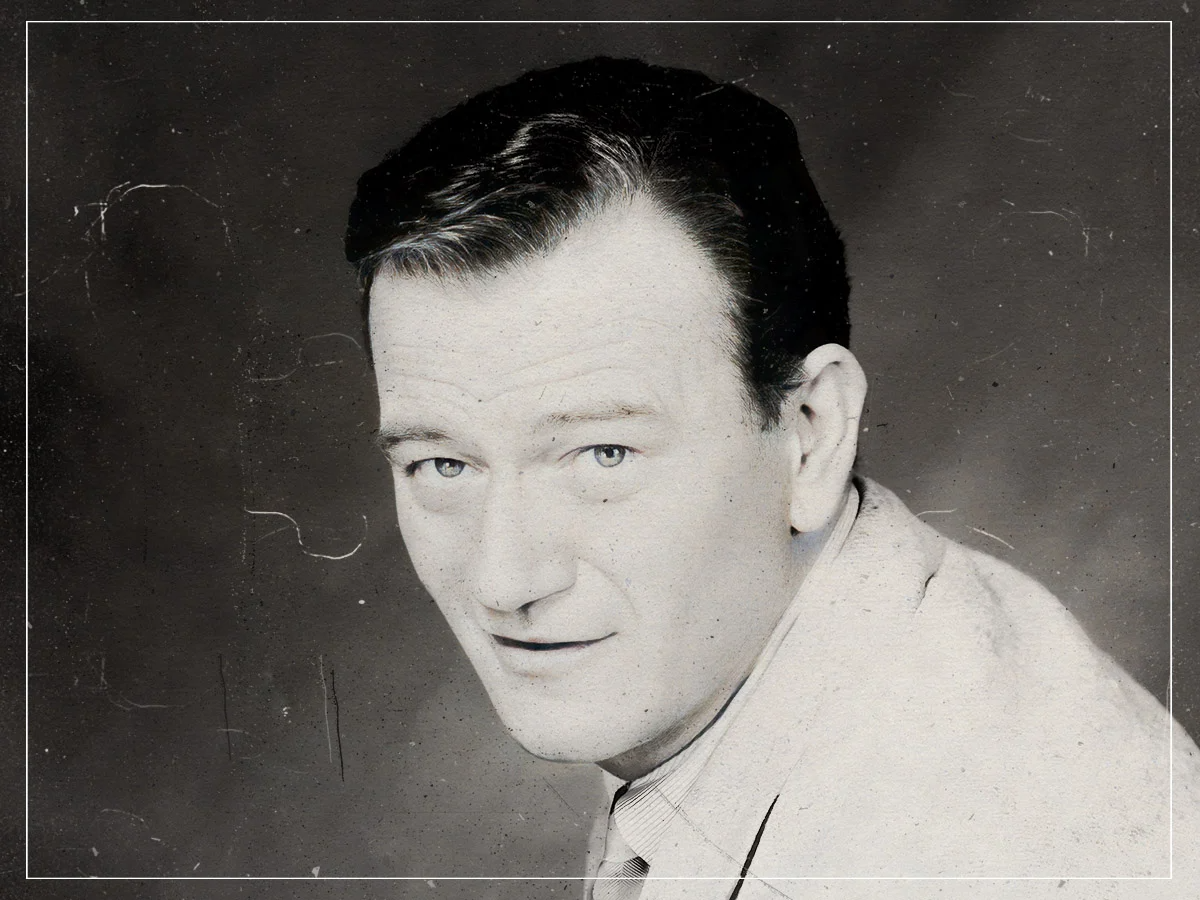

While the likes of True Grit, The Searchers and Rio Bravo saw Wayne deliver his highly masculine take on the acting profession, smoking and fighting his way through scenes early in his career, he also had to take on some projects in order to get his career up off the ground in heading for stardom.Following the box office failure of The Big Trail, Wayne had to star in a number of B-movies throughout the 1930s until he starred in John Ford’s Stagecoach. One such instance came in 1933 with the pre-Code western musical film Riders of Destiny, in which he starred as the second iteration of the singing cowboy Singin’ Sandy Saunders.Ken Maynard had already portrayed Saunders in the 1929 film The Wagon Master, and while Wayne took on the role, it was not one that he would hold close to his heart for the remainder of his life. In fact, Wayne actually felt embarrassed over his performance, particularly because he did not want to be associated with singing characters that he perceived as weak.Writer Michael Munn wrote in John Wayne: The Man Behind the Myth, “He started at Lone Star as Singin’ Sandy Saunders, the singing cowboy, in Riders of Destiny. It was something that would haunt Wayne for the rest of his life as the subject of his singing would often be brought up.”“I was just so fucking embarrassed by it all,” Wayne once said of his performance as the singing cowboy. “Strumming a guitar I couldn’t play and miming to a voice which was provided by a real singer made me feel like a fucking pansy. After that experience, I refused to be Singin’ Sandy again.”It’s clear that Wayne’s singing voice as Singin’ Sandy Saunders in Riders of Destiny was not anything like his actual speaking voice; that’s because it was provided by Bill Bradbury, the son of the film’s director Robert N. Bradbury. Still, the film’s reception led fans of Wayne to ask him to sing, a request that he simply refused each time.Check out the full version of Riders of Destiny below.
Trending
-

 Entertainment10 months ago
Entertainment10 months agoJohn Wayne’s son speaks on military service, Hollywood life and his dad, ‘The Duke’ – My Blog
-

 Entertainment10 months ago
Entertainment10 months ago40 Legendary John Wayne Quotes – My Blog
-

 Entertainment11 months ago
Entertainment11 months agoNew biography reveals the real John Wayne – My Blog
-

 Entertainment1 year ago
Entertainment1 year agoWhy one POPULAR ACTOR was FIRED from THE SONS OF KATIE ELDER and lost his career as a result! – Old western – My Blog
-

 Entertainment10 months ago
Entertainment10 months agoHow Maureen O’Hara Broke Her Hand During Iconic Scene With John Wayne – My Blog
-

 Entertainment11 months ago
Entertainment11 months agoRio Lobo (1970) marked the last collaboration between John Wayne and Howard Hawks. – My Blog
-

 Entertainment11 months ago
Entertainment11 months agoDid John Wayne really have a good time filming 1972’s The Cowboys? – My Blog
-

 Entertainment10 months ago
Entertainment10 months agoJohn Wayne and the ‘Bonanza’ Cast Appeared in This Epic Coors Light Commercial – My Blog

